KB 1-12 / The Killing of the Aghasura Demon
Once the Lord desired to go early in the morning with all His cowherd boy friends to the forest, where they were to assemble together and take lunch. As soon as He got up from bed, He blew a buffalo horn and called all His friends together. Keeping the calves before them, they started for the forest. In this way, Lord Kṛṣṇa assembled thousands of His boy friends. They were each equipped with a stick, flute and horn as well as lunch bag, and each of them was taking care of thousands of calves. All the boys appeared very jolly and happy in that excursion. Each and every one of them was attentive for his personal calves. The boys were fully decorated with various kinds of golden ornaments, and out of sporting propensities they began to pick up flowers, leaves, twigs, peacock feathers and red clay from different places in the forest, and they began to dress themselves in different ways. While passing through the forest, one boy stole another boy’s lunch package and passed it to a third. And when the boy whose lunch package was stolen came to know of it, he tried to take it back. But one threw it to another boy. This sportive playing went on amongst the boys as childhood pastimes.
When Lord Kṛṣṇa went ahead to a distant place in order to see some specific scenery, the boys behind Him tried to run to catch up and be the first to touch Him. So there was a great competition. One would say, “I will go there and touch Kṛṣṇa,” and another would say, “Oh you cannot go. I’ll touch Kṛṣṇa first.” Some of them played on their flutes or vibrated bugles made of buffalo horn. Some of them gladly followed the peacocks and imitated the onomatopoetic sounds of the cuckoo. While the birds were flying in the sky, the boys ran after the birds’ shadows along the ground and tried to follow their exact courses. Some of them went to the monkeys and silently sat down by them, and some of them imitated the dancing of the peacocks. Some of them caught the tails of the monkeys and played with them, and when the monkeys jumped in a tree, the boys also followed. When a monkey showed its face and teeth, a boy imitated and showed his teeth to the monkey. Some of the boys played with the frogs on the bank of the Yamunā, and when, out of fear, the frogs jumped in the water, the boys immediately dove in after them, and they would come out of the water when they saw their own shadows and stand imitating, making caricatures and laughing. They would also go to an empty well and make loud sounds, and when the echo came back, they would call it ill names and laugh.
As stated personally by the Supreme Personality of Godhead in the Bhagavad-gītā, He is realized proportionately by transcendentalists as Brahman, Paramātmā and the Supreme Personality of Godhead. Here, in confirmation of the same statement, Lord Kṛṣṇa, who awards the impersonalist Brahman realization by His bodily effulgence, also gives pleasure to the devotees as the Supreme Personality of Godhead. Those who are under the spell of external energy, māyā, take Him only as a beautiful child. Yet He gave full transcendental pleasure to the cowherd boys who played with Him. Only after accumulating heaps of pious activities, those boys were promoted to personally associate with the Supreme Personality of Godhead. Who can estimate the transcendental fortune of the residents of Vṛndāvana? They were personally visualizing the Supreme Personality of Godhead face to face, He whom many yogīs cannot find even after undergoing severe austerities, although He is sitting within the heart. This is also confirmed in the Brahma-saṁhitā. One may search for Kṛṣṇa the Supreme Personality of Godhead through the pages of the Vedas and Upaniṣads, but if one is fortunate enough to associate with a devotee, he can see the Supreme Personality of Godhead face to face. After accumulating pious activities in many, many previous lives, the cowherd boys were seeing Kṛṣṇa face to face and playing with Him as friends. They could not understand that Kṛṣṇa is the Supreme Personality of Godhead, but they were playing as intimate friends with intense love for Him.
When Lord Kṛṣṇa was enjoying His childhood pastimes with His boy friends, one Aghāsura demon became very impatient. He was unable to see Kṛṣṇa playing, so he appeared before the boys intending to kill them all. This Aghāsura was so dangerous that even the denizens of heaven were afraid of him. Although the denizens of heaven drank nectar daily to prolong their lives, they were afraid of this Aghāsura and were wondering, “When will the demon be killed?” The denizens used to drink nectar to become immortal, but actually they were not confident of their immortality. On the other hand, the boys who were playing with Kṛṣṇa had no fear of the demons. They were free of fear. Any material arrangement for protecting oneself from death is always unsure, but if one is in Kṛṣṇa consciousness, then immortality is confidently assured.
The demon Aghāsura appeared before Kṛṣṇa and His friends. Aghāsura happened to be the younger brother of Pūtanā and Bakāsura, and he thought, “Kṛṣṇa has killed my brother and sister. Now I shall kill Him along with all His friends and calves.” Aghāsura was instigated by Kaṁsa, so he had come with determination. Aghāsura also began to think that when he would offer grains and water in memory of his brother and kill Kṛṣṇa and all the cowherd boys, then automatically all the inhabitants of Vṛndāvana would die. Generally, for the householders, the children are the life and breath force. When all the children die, then naturally the parents also die on account of strong affection for them.
Aghāsura, thus deciding to kill all the inhabitants of Vṛndāvana, expanded himself by the yogic siddhi called mahimā. The demons are generally expert in achieving almost all kinds of mystic powers. In the yoga system, by the perfection called mahima-siddhi, one can expand himself as he desires. The demon Aghāsura expanded himself up to eight miles and assumed the shape of a very fat serpent. Having attained this wonderful body, he stretched his mouth open just like a mountain cave. Desiring to swallow all the boys at once, including Kṛṣṇa and Balarāma, he sat on the path.
The demon in the shape of a big fat serpent expanded his lips from land to sky; his lower lip was touching the ground and his upper lip was touching the clouds. His jaws appeared like a big mountain cave, without limitation, and his teeth appeared just like mountain summits. His tongue appeared to be a broad traffic way, and he was breathing just like a hurricane. The fire of his eyes was blazing. At first the boys thought that the demon was a statue, but after examining it, they saw that it was a more like a big serpent lying down in the road and widening his mouth. The boys began to talk among themselves: “This figure appears to be a great animal, and he is sitting in such a posture just to swallow us all. Just see–is it not a big snake that has widened his mouth to eat all of us?”
One of them said, “Yes, what you say is true. This animal’s upper lip appears to be just like the sunshine, and its lower lip is just like the reflection of red sunshine on the ground. Dear friends, just look to the right and left hand side of the mouth of the animal. Its mouth appears to be like a big mountain cave, and its height cannot be estimated. The chin is also raised just like a mountain summit. That long highway appears to be its tongue, and inside the mouth it is as dark as in a mountain cave. The hot wind that is blowing like a hurricane is his breathing, and the fishy bad smell coming out from his mouth is the smell of his intestines.”
Then they further consulted among themselves: “If we all at one time entered into the mouth of this great serpent, how could it possibly swallow all of us? And even if it were to swallow all of us at once, it could not swallow Kṛṣṇa. Kṛṣṇa will immediately kill him, as He did Bakāsura.” Talking in this way, all the boys looked at the beautiful lotus-like face of Kṛṣṇa, and they began to clap and smile. And so they marched forward and entered the mouth of the gigantic serpent.
Meanwhile, Kṛṣṇa, who is the Supersoul within everyone’s heart, could understand that the big statuesque figure was a demon. While He was planning how to stop the destruction of His intimate friends, all the boys along with their cows and calves entered the mouth of the serpent. But Kṛṣṇa did not enter. The demon was awaiting Kṛṣṇa’s entrance, and he was thinking, “Everyone has entered except Kṛṣṇa, who has killed my brothers and sisters.”
https://prabhupadabooks.com/kb/1/12?d=1
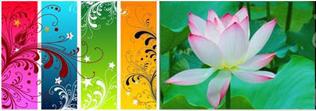

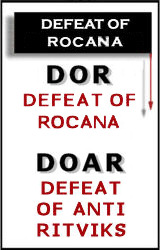
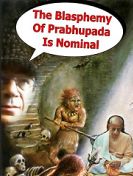
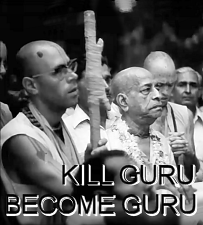
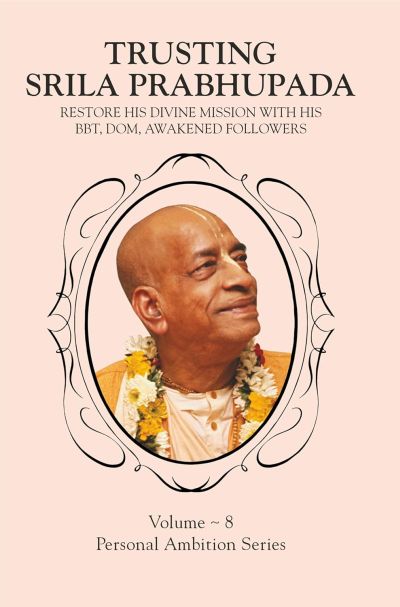
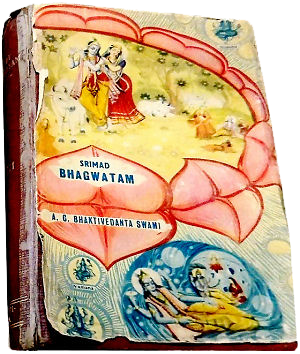
Taken from “The Demons Lord Kṛṣṇa killed in Vrindāvana and the Anārthas they represent”
AGHĀSŪRA
Aghāsūra represents the mentality of cruelty to others, and violence and causing trouble to others out of envy. This attitude is an offense against the chanting of the holy names. It may also manifest in the form of an unwillingness to help other living beings by giving them Kṛṣṇa consciousness.
According to the Garga Saṁhīta in his previous life he was Agha, a son of Śaṅkhāsura. He had a very attractive body, of which he was very proud. One time he saw the muni Aṣtavakra, whose body is disfigured, and he laughed and said “Who is this ugly person?” The sage cursed him to become the ugliest snake on earth. Agha then fell at his feet and begged for mercy, so the sage blessed him that he would be delivered by Lord Kṛṣṇa.
https://www.prabhupadanugas.eu/news/?p=57546